Showcasing the Craftsmanship of the People Underpinning Manufacturing at DIC
Interviews with DIC Group Employees
Masters of Color & Comfort
Head Researcher, Dispersion Technical Group 6,
Dispersion Technical Division 2, Saitama Plant
Ryota Hibino

Mr. Hibino joined the Company in 2003. After a stint in the New Technology Development Center as part of the MJ Project at the Saitama Plant, he was posted in 2006 to the Imaging & Reprographic Products Technical Division, predecessor of his current division, where his role included the development of aqueous pigmented jet inks for photographic, high-speed plain paper and industrial printing applications, among others. As head researcher, Mr. Hibino currently shares his technical expertise with other team members.
Pursuing R&D aimed at realizing products
that enhance inkjet printing performance
Design and development of dispersants to stabilize
aqueous pigmented jet inks
Inkjet technology entails forcing drops of ink through fine nozzles. Inkjet printers harnessing this technology have become popular in homes and offices because of their ease of use. Ink performance and ejection technologies, which determine printing quality, have improved, as a result of which inkjet printing is increasingly common for newspapers, books and other commercial printing applications, as well as in industrial printing applications such as billboards and product packaging. The Saitama Plant’s Ryota Hibino has been involved in the development of aqueous pigmented jet inks since joining DIC in 2003.
“The aqueous pigmented inks used in industrial inkjet printers are less likely to fade, even in sunlight, than the aqueous dye-based inks common in consumer inkjet printers,” Mr. Hibino explains. “They also resist scratching and water stains. The challenge, however, is that pigment powder particles are tiny, with a diameter of only around 100 nanometers, and in tight lumps. For use in inkjet printers, particles must be loosened and their size further reduced to facilitate stable dispersion in a solution.”
It is considerably more difficult to eject aqueous pigmented inks using inkjet technology. Water evaporates quickly, so pigments are more likely to block ink nozzles. Evaporation-resistant solvent-based inks offer stable ejection, but aqueous inks are desirable because of their lower environmental impact. Mr. Hibino is thus working to develop an optimal pigment dispersant that delivers the performance required of aqueous pigmented inks. “The type and amount of dispersant you need to properly disperse pigments depend largely on pigment properties and compatibility with other components of the ink,” he explains. “Potential combinations of pigments and dispersants are thus countless. For this reason, alongside our regular experiments we began conducting prior assessments of pigment and dispersant characteristics and set about developing a technique that theoretically creates combinations to optimize the performance of raw materials. We have also started using artificial intelligence (AI), which has been the subject of considerable attention recently. We hope that using AI to analyze data accumulated over the past 20 years or so will enable us to acquire knowledge that we humans might otherwise overlook.”
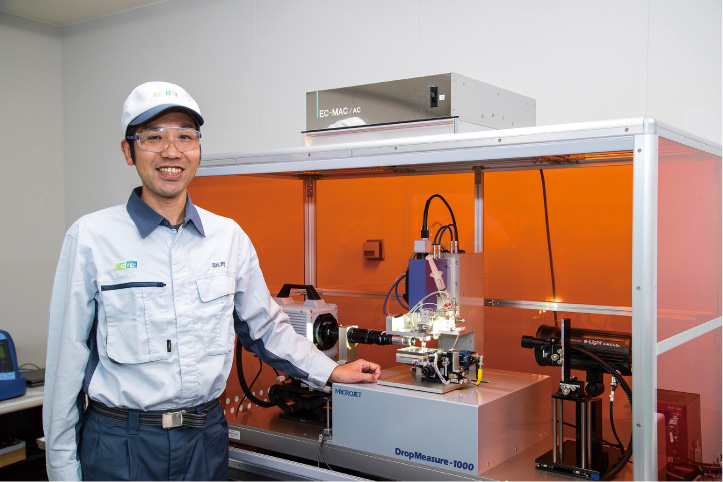
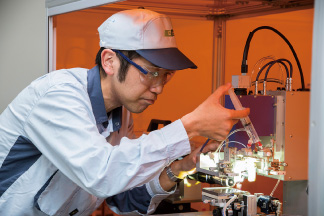
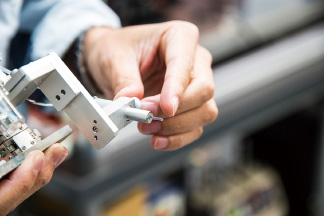
Cutting-edge equipment for developing inks for industrial inkjet printers at the Saitama Plant; the analyzer employs an ultrahigh-speed camera to capture slow-motion video of the shape and trajectory of ink droplets of just a few picoliters ejected from inkjet nozzles.
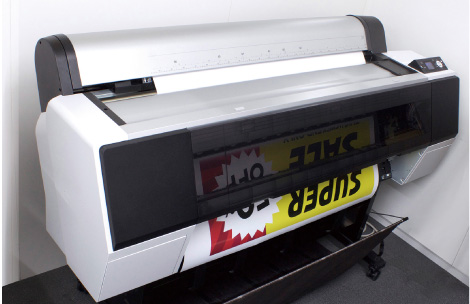
larger than consumer models.
From zero to commercialization in seven years
In his first seven years at DIC, Mr. Hibino experienced every aspect of product development from early-stage product design through to equipment selection, plant construction, assessment of mass production viability and product quality maintenance. While stressful, the opportunity to see products that he had designed progress from development to commercialization was exciting. “Inkjet technology is simply about propelling small droplets of ink through printer nozzles,” he says. “An electrical signal forces ink out of the print head at about 30 kilometers an hour, creating picoliter-sized droplets in the air that are deposited on paper or another print substrate, which is positioned about a millimeter away. The ink spreads on the surface and adheres in not much more than 10 microseconds. It really is quite remarkable. My first job after joining DIC was as part of a product development project, doing my best to get the minute ink droplets, which dry very quickly, to adhere consistently to the paper. This experience enabled me to learn a great deal from my supervisors and team members.”
It can take more than four years to develop an jet ink, from product design and prototyping through to up-scaling verification, market testing and completion. “We have several projects progressing alongside each other at our site,” Mr. Hibino explains. “If we are impatient and only look at what is happening right in front of us, we may miss the bigger picture. For this reason, our approach is to promote technical development in a manner that is in keeping with the fundamental principles of ink, pursuing distant goals by starting from what we can do.”
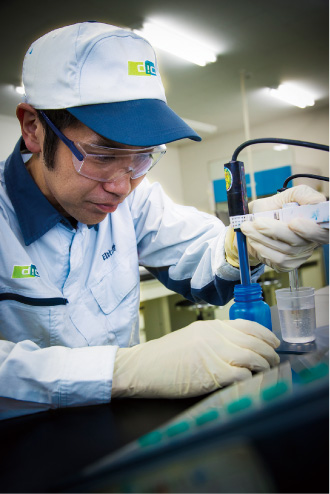
aqueous ink; attributes such as
particle distribution, viscosity, color,
surface tension and pH values are
central to performance.
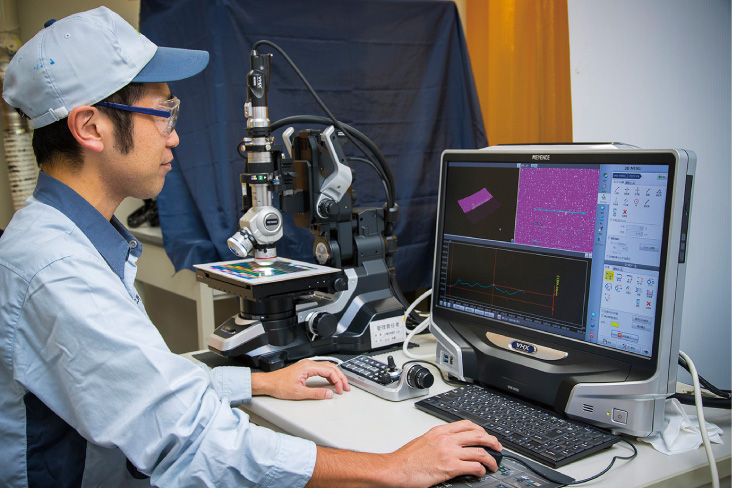
in paper surfaces on a monitor aim to improve the performance of jet inks
in terms of high-speed printing, continuous discharges and media fixing.
Broad applications for inkjet technology
In the past, inkjet printing was seen as technology for discharging ink. Times have changed. Today, advanced techniques for accurately depositing small liquid droplets onto target media are garnering attention from various perspectives, broadening the potential of this technology.
“Inkjet technology makes it possible to print colors and patterns on textiles, for which DIC has already undertaken development, as well as food and building materials.”, says Mr.Hibino. “Applied research has progressed in printed circuit boards for electronic devices, 3D printing and in the medical arena, such as through biochips that discharge the cells of organisms. Some advances are already in practical use. While the technical hurdles are higher than those required for liquids used in inks and we need to overcome those challenges, I believe that the potential of inkjet technology will expand dramatically in the years ahead.”
To date, DIC’s jet inks business has drawn on the Company’s advantages as a comprehensive chemicals manufacturer, with raw materials procurement being largely internal. “DIC’s business offers all sorts of opportunities for collaboration.”, Mr.Hibino explains. “One such area is the use of pigments extracted from Spirulina that you can discharge into food products. Spirulina is a DIC product, and I would like to develop a liquid solution to discharge it from inkjets nozzles. My dream is to create products that will someday become household names. I am confident that leveraging DIC’s comprehensive and unmatched capabilities will allow me to realize this dream.”
